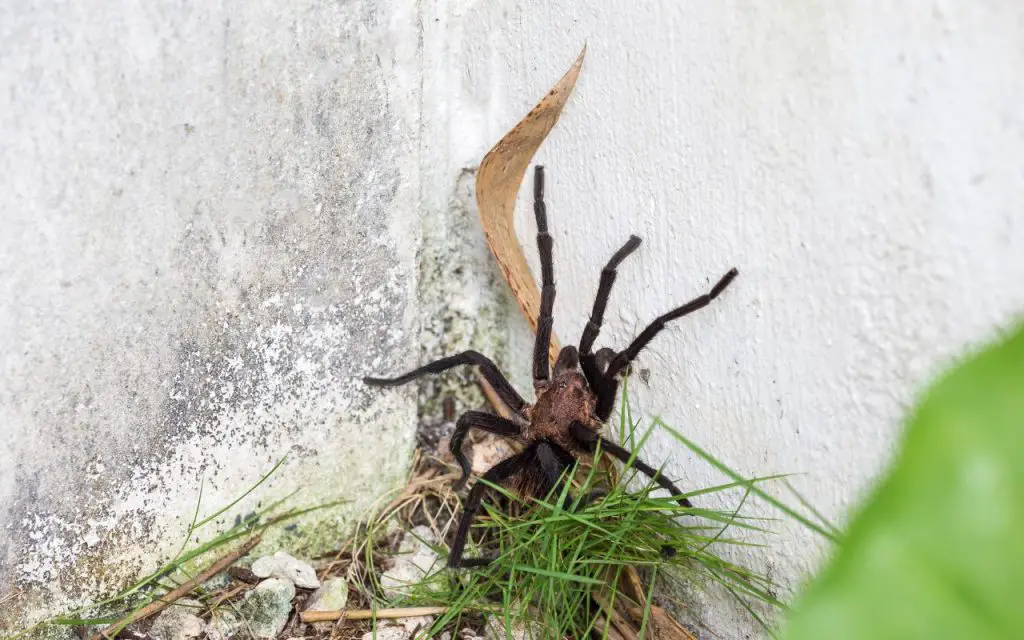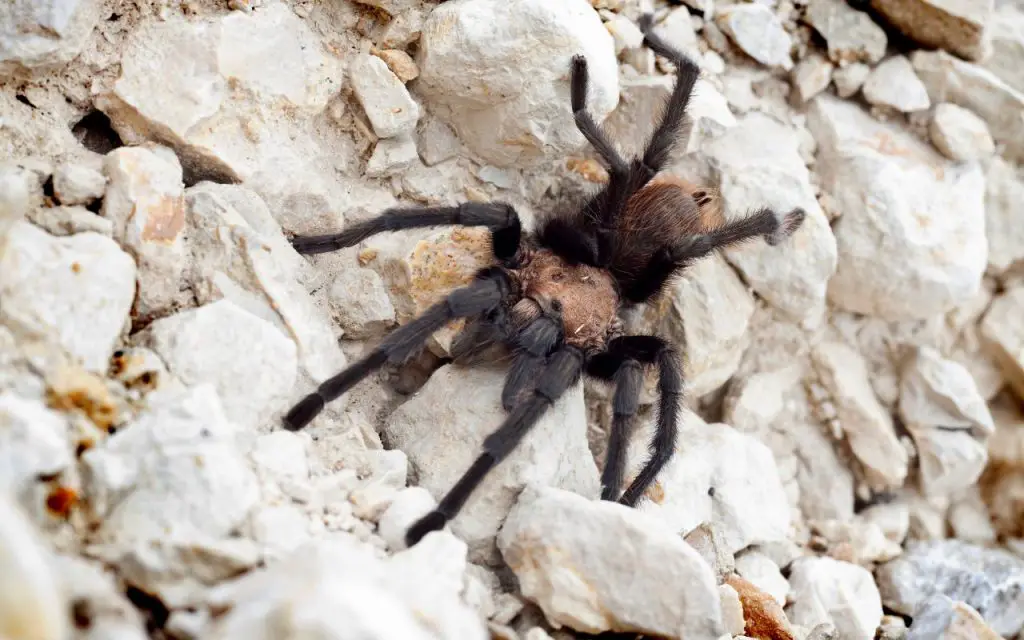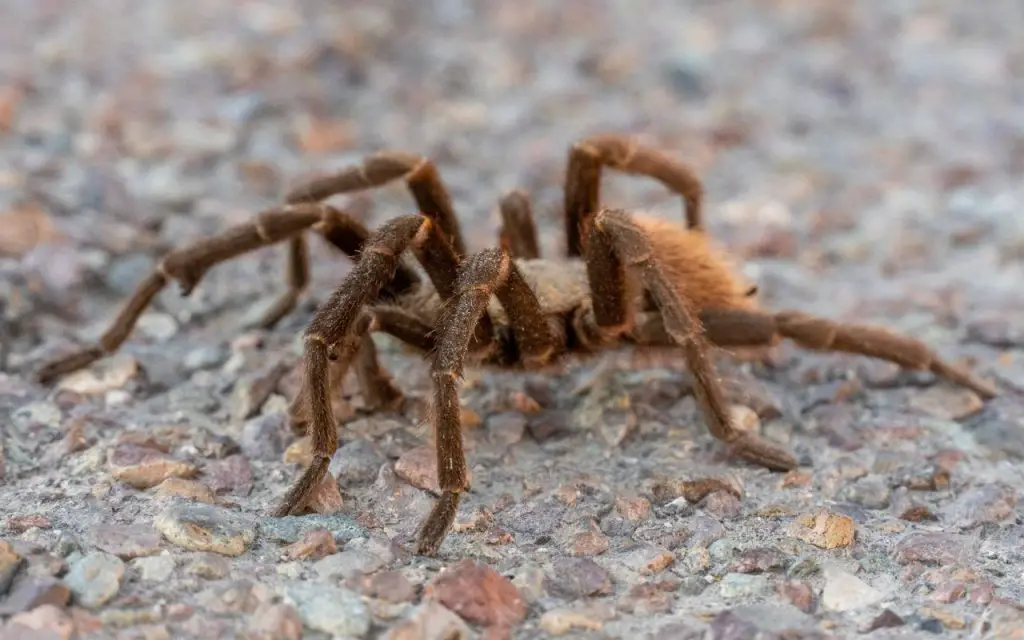As someone who has spent more than two decades lovingly caring for arachnids, including the Texas Tan Tarantula (Aphonopelma anax), I’ve come to appreciate the beauty and intriguing behavior of these remarkable creatures.
From their vibrant colors to their unique lifecycles, each element about these spiders captivates me. Today, I’m thrilled to share my knowledge and expertise in Texas Tan Tarantula care, hoping to aid fellow enthusiasts on their arachnid journey.
There’s a common misconception that tarantulas are dangerous, or even deadly. The truth, however, is far from this. In reality, the Texas Tan Tarantula is an incredibly docile creature, and caring for them can be a rewarding experience. They’re the perfect starting point for anyone new to the world of tarantula keeping.
Getting Your Tarantula Home
The first step is sourcing your Texas Tan Tarantula. It’s critical to choose a reputable breeder to ensure the health and welfare of your pet. Ask questions about the spider’s origin, age, and any health issues. As an experienced tarantula keeper, my advice is to start with a juvenile or young adult, especially for beginners. You’ll be able to observe its growth and behavior, learning as you go.
Creating a Suitable Habitat
Once you’ve got your tarantula, it’s time to prepare their new home. Texas Tans are terrestrial tarantulas that prefer dry environments. A 5-10 gallon tank with a secure top is suitable for an adult. Cover the floor of the tank with 3-4 inches of a substrate like coconut fiber or pesticide-free soil. Remember to provide a hiding spot, like a piece of cork bark or a small flower pot, where your tarantula can retreat when it feels threatened or stressed.
Temperature is another important factor. Aim to keep your tarantula’s enclosure between 70-85°F with a humidity level of about 50-60%. Although Texas Tans are resilient and can tolerate slight deviations, maintaining these conditions will ensure your spider’s comfort and longevity.
Feeding and Hydration
Feeding a Texas Tan Tarantula is straightforward. Their diet primarily consists of insects such as crickets, mealworms, and roaches. I feed my adult tarantulas once a week and my juveniles twice a week. Always remember, tarantulas can go for longer periods without food, so don’t panic if your pet isn’t eating regularly.
Acceptable prey items include:
- Crickets
- Waxworms
- Mealworms
- Dubia roaches
- Hornworms
- Locusts
As for water, provide a shallow water dish, ensuring it’s always filled with fresh, clean water. Avoid misting, as Texas Tans prefer a dry environment. Instead, pour some water into their substrate once a week, so that the bottom layers are just slightly damp.

Handling Your Tarantula
One of the questions I often get asked is, “Can I handle my tarantula?” The answer is yes, but with caution. While Texas Tans are docile, handling should be limited to minimize stress. Always be gentle and move slowly to avoid startling them.
Personally, my main fear with handling is the risk of dropping them. Tarantulas can quite literally pop if they fall from more than a foot. You should always handle them sitting down.
Molting
Molting is an essential part of a tarantula’s life cycle. It’s how they grow and regenerate lost limbs. When your Texas Tan is ready to molt, you’ll notice changes in their behavior. They may refuse food, become less active, and sometimes their abdomen darkens. Provide plenty of water during this time and avoid handling until a week or so after the molt.
Keeping Your Tarantula Healthy
Regularly check your tarantula’s behavior and appearance for signs of good health. Their abdomen should be plump but not overly swollen, and they should have a good appetite. If you notice any abnormalities such as lethargy, loss of appetite, or a sudden change in behavior, consult with a vet specializing in exotic pets.
Remember, tarantula keeping is not just about owning an unusual pet; it’s about respecting and appreciating these unique creatures.
Final Thoughts on the Texas Tan Tarantula
Why I like this species:
- This is a medium-sized Tarantula that does well in screen-topped glass tanks. This makes them easier to keep than species that require very high humidity
- They are incredibly docile, contending with the Arizona Blonde and the Brazilian Black for the ‘most laid-back tarantula’ title.
- The Texas Tan is less commonly seen in captivity, and if you breed them one day you will easily sell the offspring
Things to consider before buying:
- I’m trying to think of some cons here but really can’t – this is a great species. Overall, the only thing to be aware of is that females live much longer than males. This is typical of most tarantulas though – it’s not particular to the Texas Tan!
I hope this comprehensive guide helps you on your journey with your Texas Tan Tarantula. They truly are remarkable creatures, deserving of our respect and care. And who knows? Maybe you’ll fall in love with these eight-legged wonders just as I did.

What does the Texas tan tarantula eat?
Texas Tan Tarantulas will eat a variety of invertebrates. In general, however, they seem to prefer Dubia roaches and crickets. Some keepers also offer pinkie mice as an occasional treat, but it’s not really necessary. Invertebrates will provide all the nutrition your spider needs if you dust them with vitamins. Always source your feeder insects from a pet store or supplier, as wild bugs could pass diseases or parasites to your pet.
What is the temperament of a Texas tan tarantula?
The temperament of a Texas Tan Tarantula is very docile. They almost always retreat and try to hide rather than defend themselves. In fact, it would be quite hard to get one to bite! This temperament is typical of tarantulas in the Aphonopelma genus, which represents some of the most docile spiders in the world.
How long do Texas tan tarantulas live?
The Texas Tan Tarantula has a similar lifespan to the Texas Brown, one of its closest relatives. Females can easily live to 20 years or more, and 30 may be possible. Males live shorter lives, generally around 8 to 10 years.







